PRESENTATION: Lucy Skaer-Ingots and Adaptations
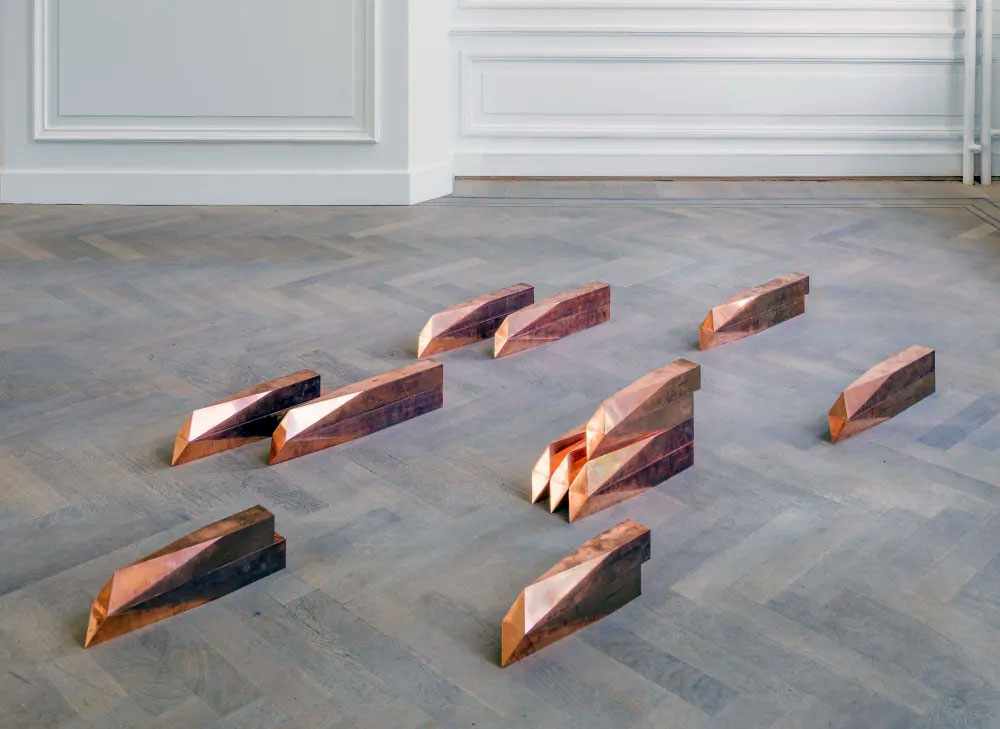 Lucy Skaer’s multimedia practice is equal parts material and conceptual, drawing from a background of history, art and its foibles. The veritable craftsmanship of individual artworks points to the inheritance of artistic techniques and contrasts handmade objects with processes of reproduction. Altering the content of her source material, Skaer reanimates the significance of images in the collective consciousness. The use, ritual, and history of the materials she uses are both implied and concealed, but there is a recurrent concern for their relationship to the landscape.
Lucy Skaer’s multimedia practice is equal parts material and conceptual, drawing from a background of history, art and its foibles. The veritable craftsmanship of individual artworks points to the inheritance of artistic techniques and contrasts handmade objects with processes of reproduction. Altering the content of her source material, Skaer reanimates the significance of images in the collective consciousness. The use, ritual, and history of the materials she uses are both implied and concealed, but there is a recurrent concern for their relationship to the landscape.
By Dimitris Lempesis
Photo: GRIMM Gallery Archive
The veritable craftsmanship of individual artworks points to the inheritance of artistic techniques and contrasts handmade works with processes of reproduction. Altering the content of her source material, Skaer reanimates the significance of images in the collective consciousness. The use, ritual and history of the materials she uses are both implied and concealed, but there is a recurrent concern for their relationship to the landscape. Contrasting the structure of our daily lives with the expansive uncertainty of geologic time, Skaer’s work reminds us that value and meaning are abstract and ever-changing, and in this there is a utopian potential for re-definition. Throughout her practice, Skaer interprets imagery and objects found within diverse contexts and histories before transforming or disrupting their material and metaphorical origins. All the works in this presentation can be reduced to one single form, the copper ingot – a recurrent motive throughout Skaer’s oeuvre. Central to the exhibition “Ingots and Adaptations” is Skaer’s sculptural installation “Harlequin’s Ingots” – a group of polished copper bars seemingly randomly scattered over the floor, playful as the character from which the work takes its name. Sliced in various triangular shapes, the angular surfaces catch the light, creating reflections that make the work interact with its surroundings. Encircling the gallery space are “Hares” adapted from the copper ingots to which ears and eyes are added, laboriously transforming something materially minimal or cold into something lively, animated, and animal. Derived from Skaer’s interest in the illustrations from the “Livre de Chasse”, a Mediaeval hunting manual written between 1387-1389 by Gaston III, Count of Foix, the Hares appear as frozen moments within a hunt, a balance of the force of desire, the blankness of raw material and the possibility of empathy. Skaer successfully transforms the static ingots into a dynamic composition and creates a suggestion of movement – as if the solid metal were weightless. In Lucy Skaer’s art ordinary distinctions and definitions do not apply. The difference between categories we think of as opposites – such as the living and the dead, the present and the past, meaning and meaninglessness – are constantly revisited as she works to transform materials and ideas. Skaer works in many different ways using film, drawings, sculpture, craft or decorative objects, prints, glass and ceramics. She is interested in images, materials and objects and how their meaning, importance or economic value might shift if they change role, shape or appearance. She once placed a diamond and a scorpion side by side on an Amsterdam pavement; both of course were made of carbon. She has cast modern bronze in 4,000-year-old moulds and remade a famous twentieth-century sculpture, Bird in Space, by Constantin Brancusi, in compacted coal dust.In 2006, when Skaer was living and working in New York, she travelled to Mexico City to seek out the artist Leonora Carrington. The ninety-year-old painter had been a key figure in the Surrealist movement. Skaer’s installation “Leonora” (2006) brings together four elements: two sculptures, including an oak table with an inlaid mother-of-pearl image of hands, a dense pencil drawing, and a film. The film is short and simple: capturing the elderly artist in her home. Skaer’s is not so much homage from one generation to another as an encounter. What might happen to Skaer’s own art and ideas if they were to meet those of such a powerful predecessor? Might they also be transformed? Reflecting the way that her own approach to art is fluid, she is never guided by a single approach to a problem or a single way of thinking, Skaer also works with other artists. With Rosalind Nashashibi she works in film and photography as Nashashibi/Skaer. She is also part of the artists’ collective Henry VIII’s Wives, a group of artists who met when they studied in the Environmental Art Department at the Glasgow School of Art.
Photo: Lucy Skaer, Harlequin’s Ingots, 2012, Copper, 24 parts, Dimensions variable, Each: 5 x 5 x 34 — 51 cm | 2 x 2 x 13 3/8 — 20 1/8 in, Edition of 3 plus 1 artist’s proof, © Lucy Skaer, Courtesy the artist and GRIMM Gallery
Info: GRIMM Gallery, Keizersgracht 241, Amsterdam, The Netherlands, Duration: 25/7-7/9/2024, Days & Hours: Tue-Sat 11:00-18:00, https://grimmgallery.com/
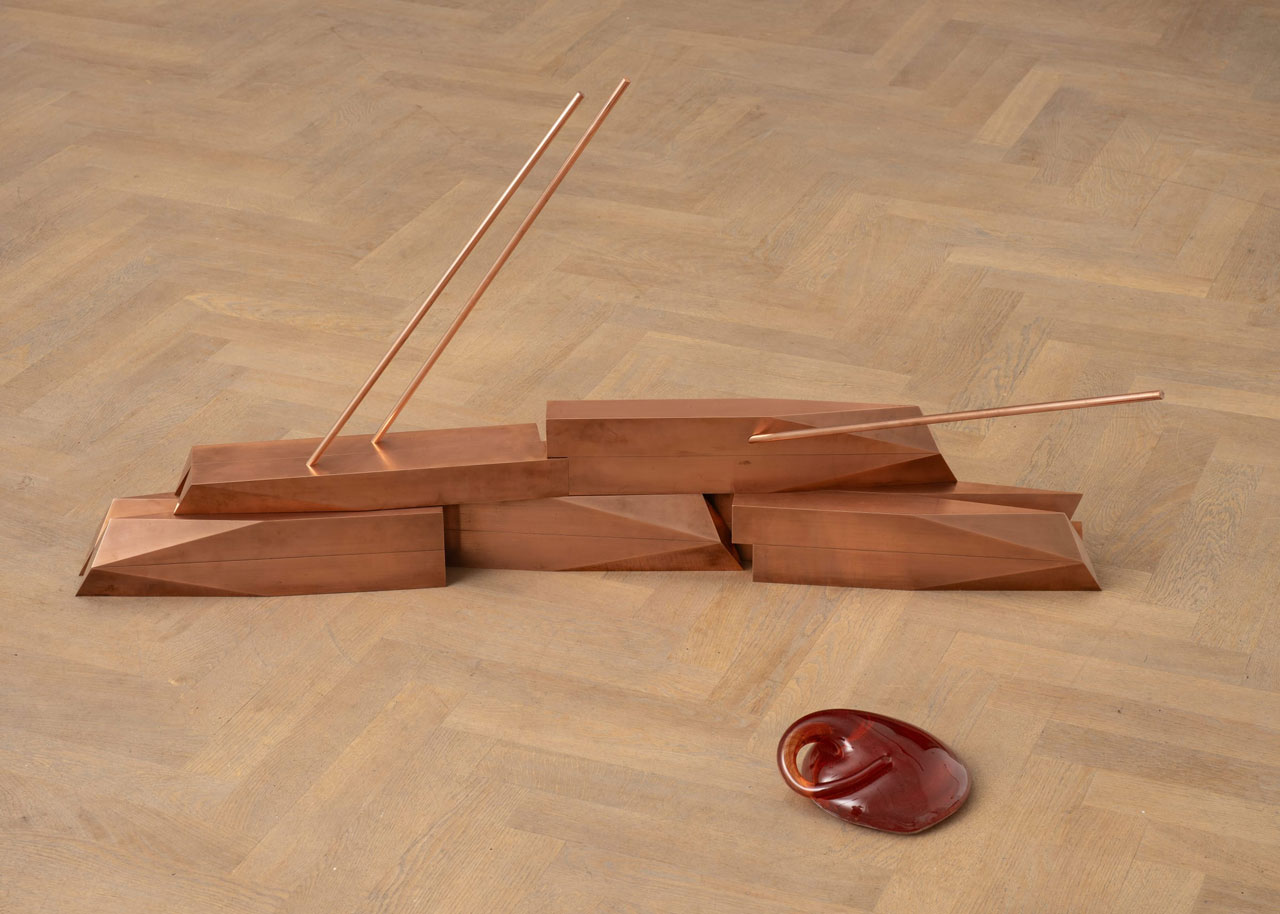
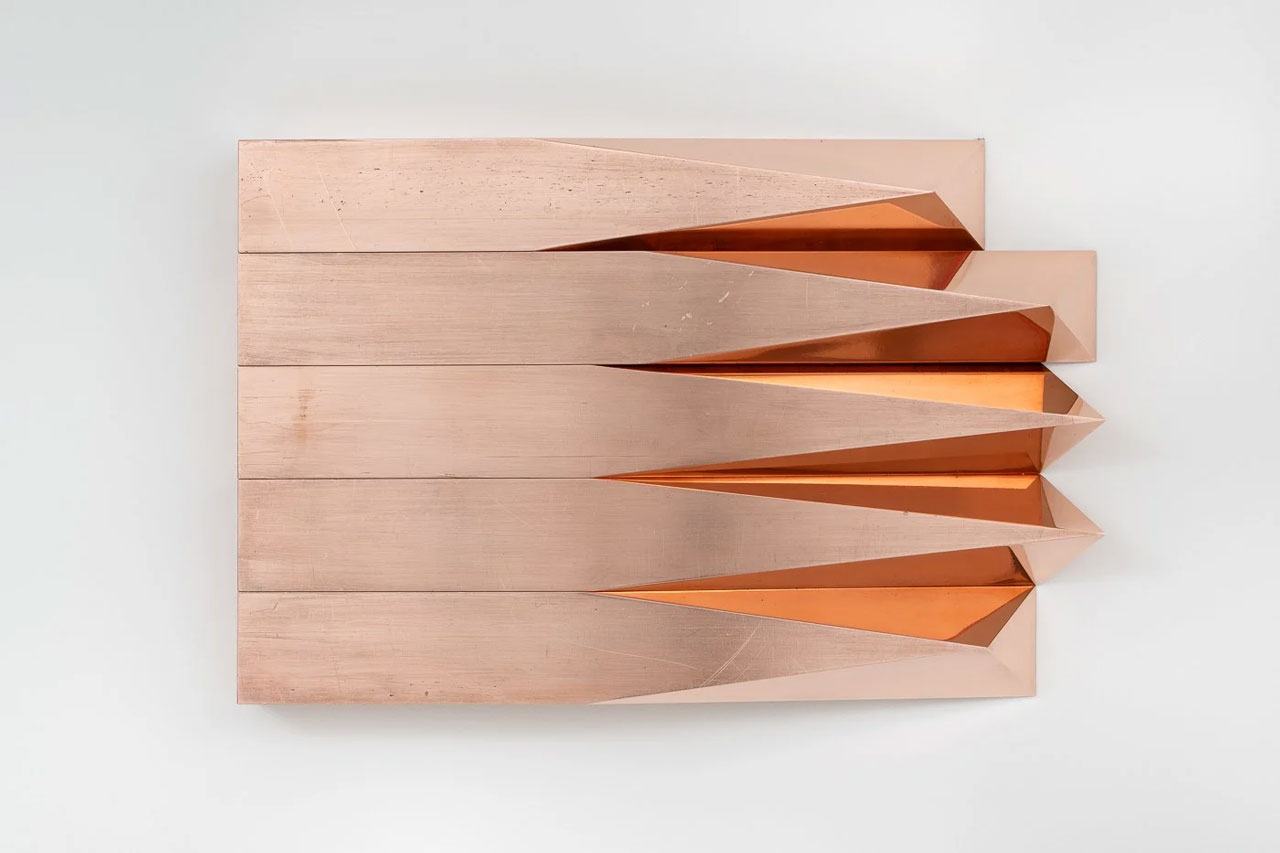
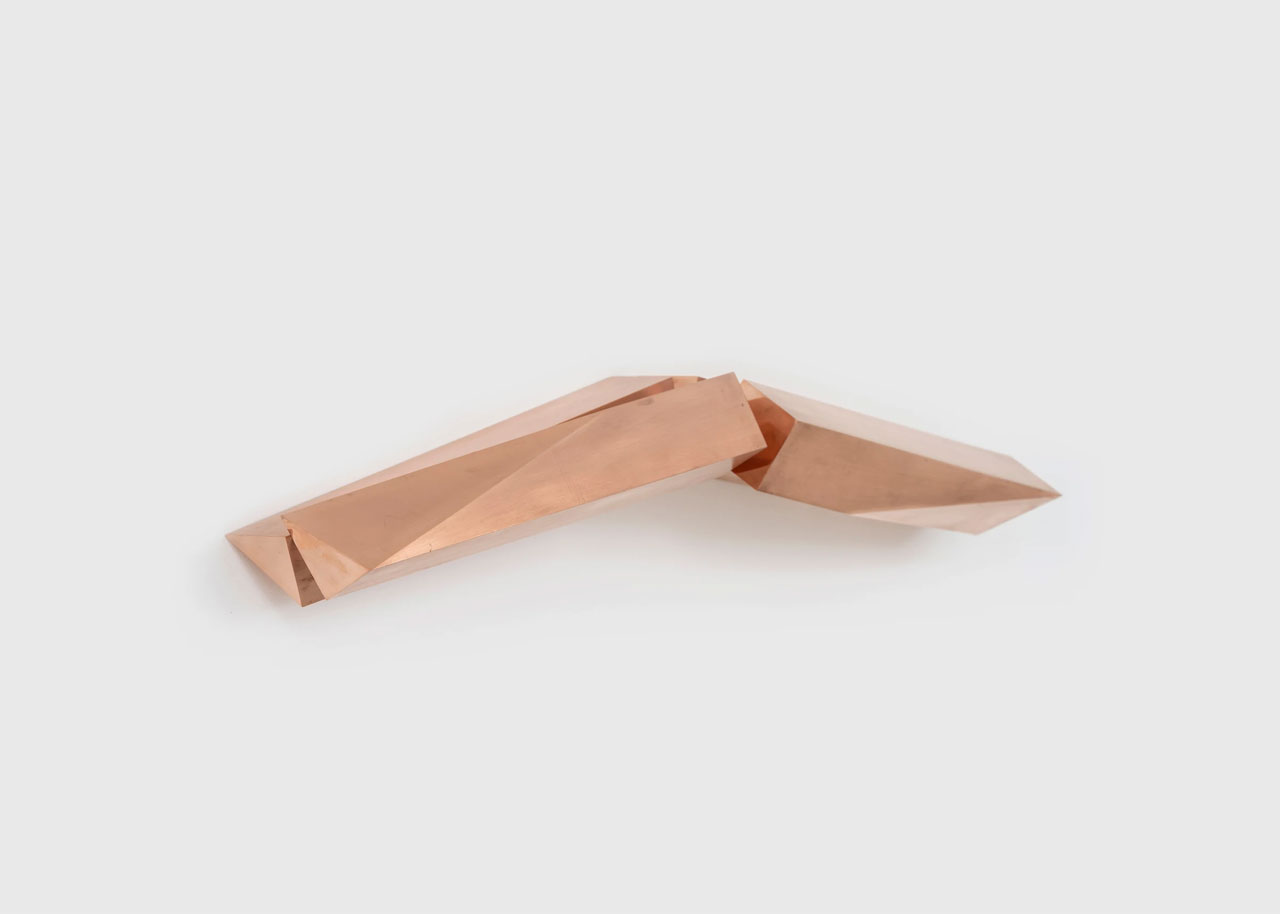
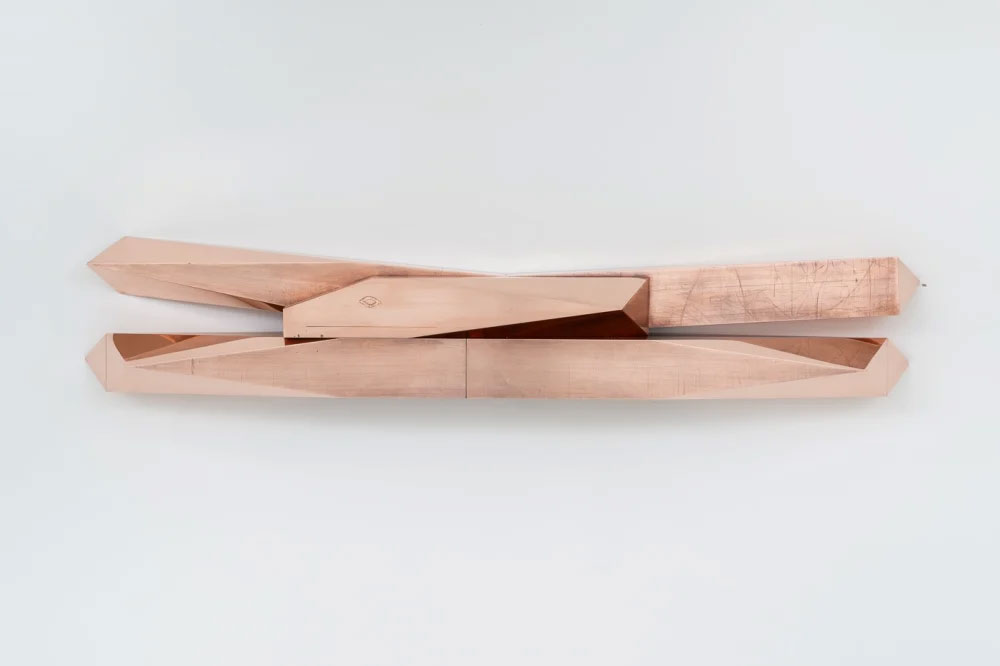
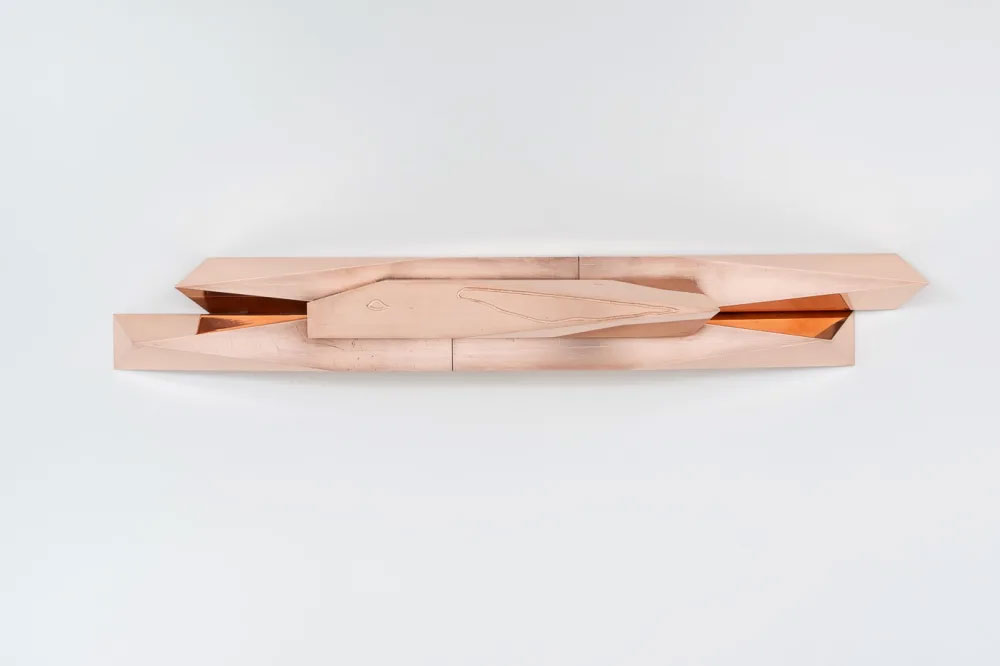
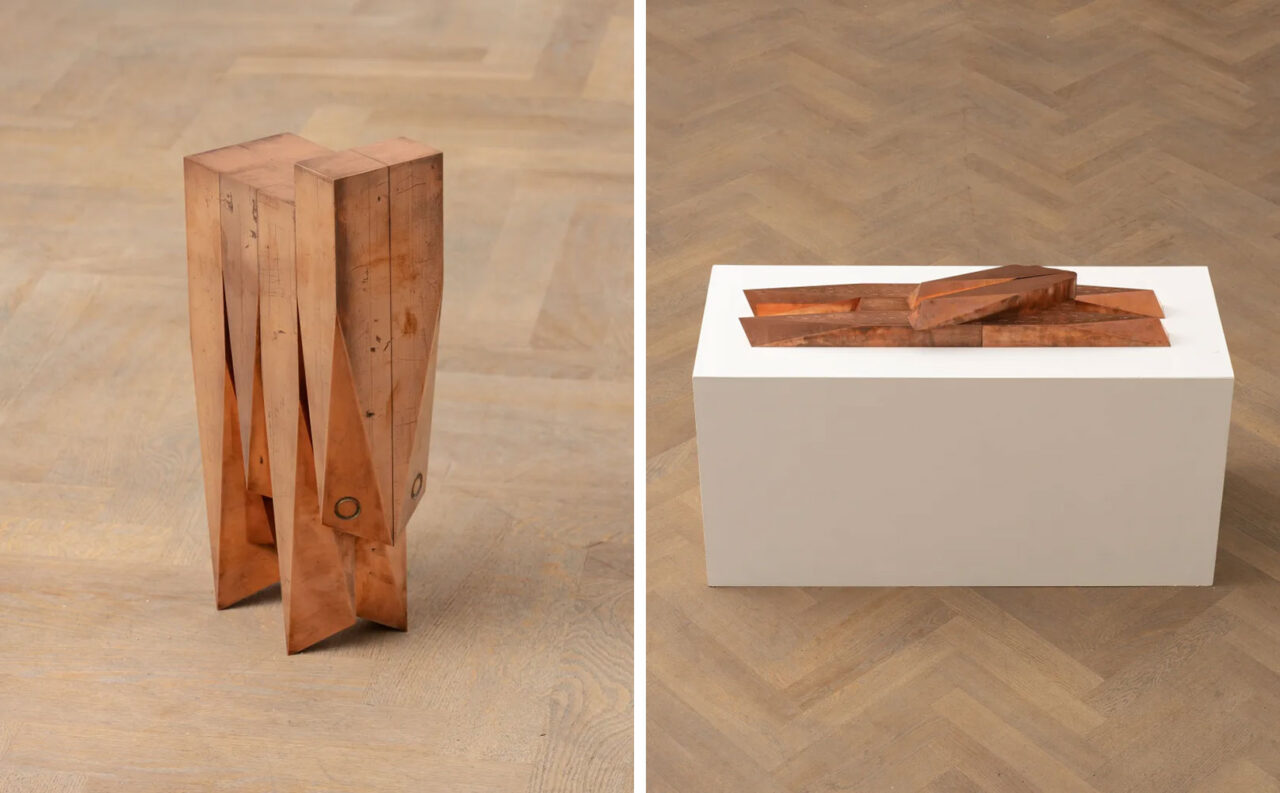
Right: Lucy Skaer, La Chasse (copper hare 1), 2018 , Copper, 10 x 82 x 18 cm | 4 x 32 1/4 x 7 1/8 in, © Lucy Skaer, Courtesy the artist and GRIMM Gallery
